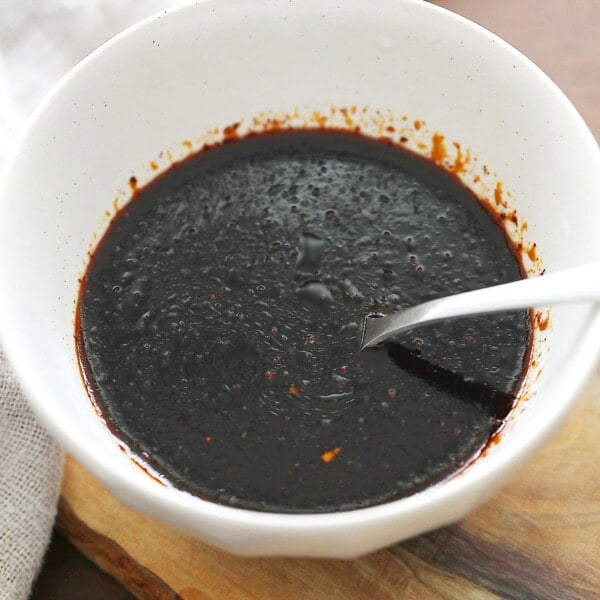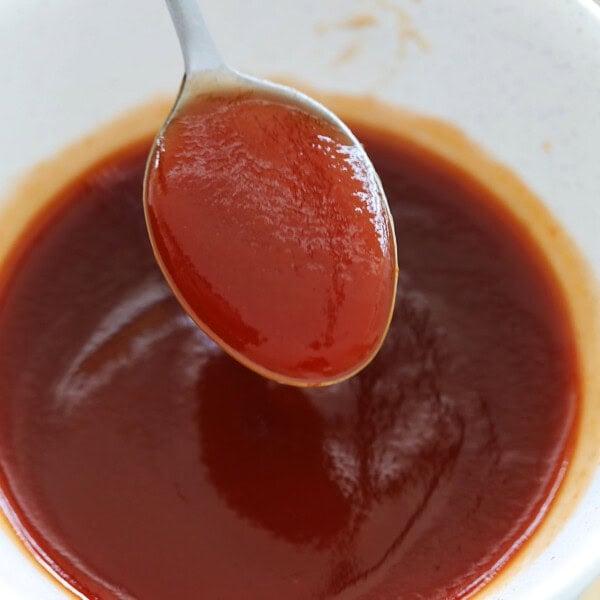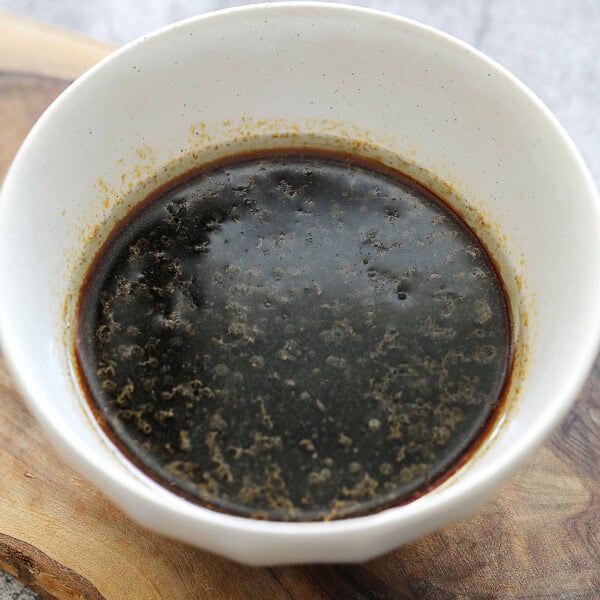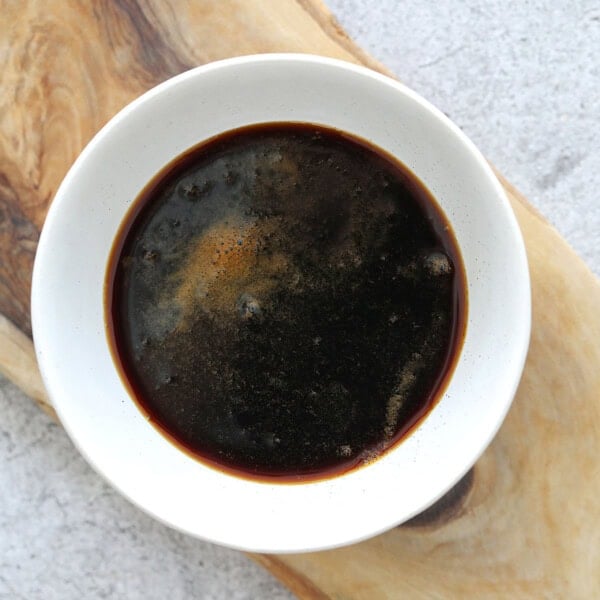This post may contain affiliate links. Please read my privacy policy.
This easy homemade chili oil is aromatic, spicy, and full of flavor. Made with just red pepper flakes, cloves, and oil, it’s the perfect condiment for noodles, dumplings, or stir-fries. Simple, quick, and so much better than store-bought.
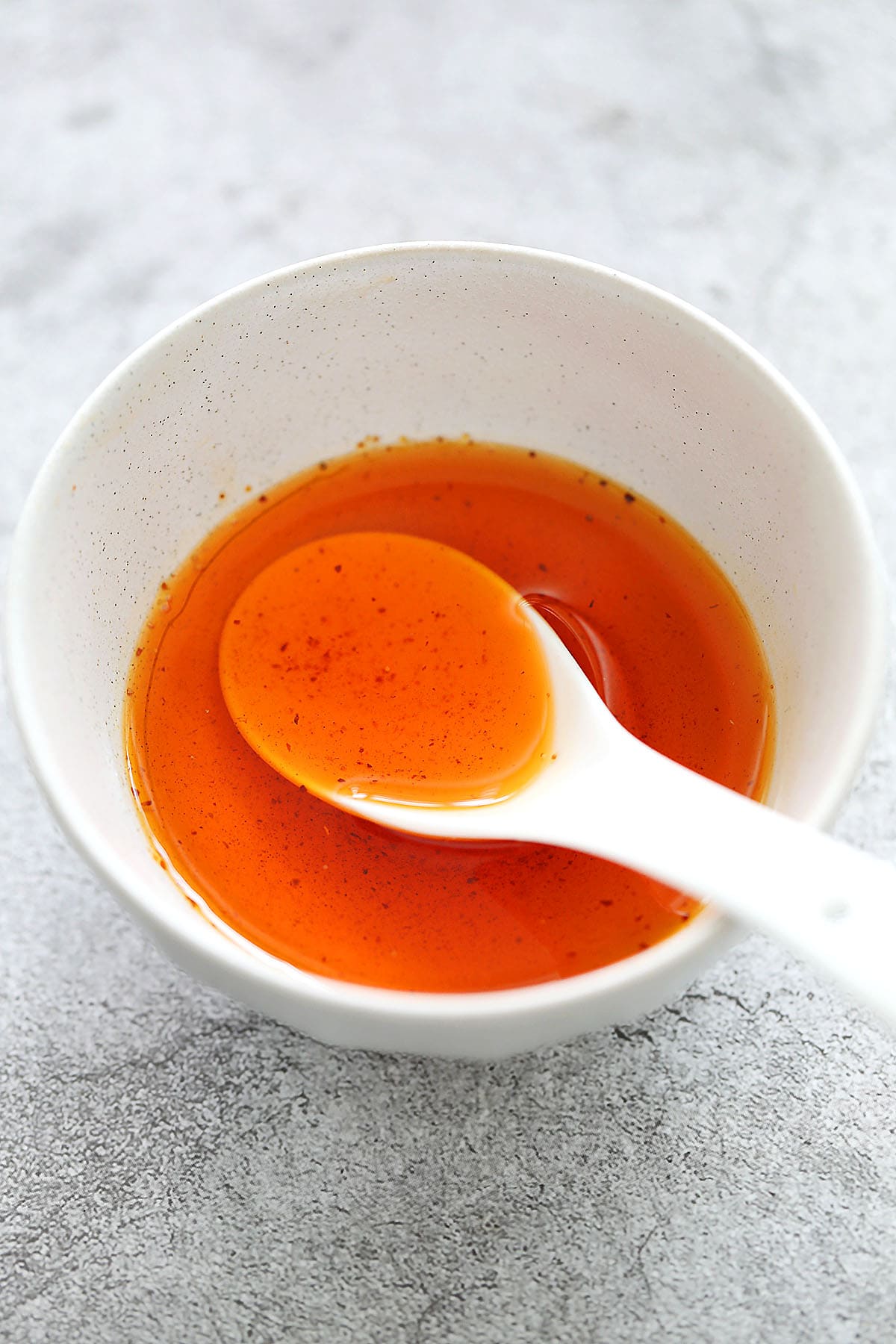
Homemade Chili Oil Recipe
Chinese cuisine has many regional cooking styles, and one of my favorites is Sichuan cuisine. Sichuan food is famous for its ma (numbing) and la (spicy) flavors. For the la flavor, dried red chilies are used abundantly, but chili oil also plays a key role in adding that deep, spicy aroma to dishes.
Bottled chili oil (la you) is easy to find at Asian grocery stores, but it can be pricey, and honestly, making it from scratch is cheaper and super easy. I usually make a small batch of this homemade chili oil, just enough for a few Sichuan dishes. I don’t like the smell of stale oil, so making it means it’s always fragrant and flavorful. Check the Simple Ways To Add It To Your Meals section below for some of my favorite ways to use it.
Add This To Your Pantry
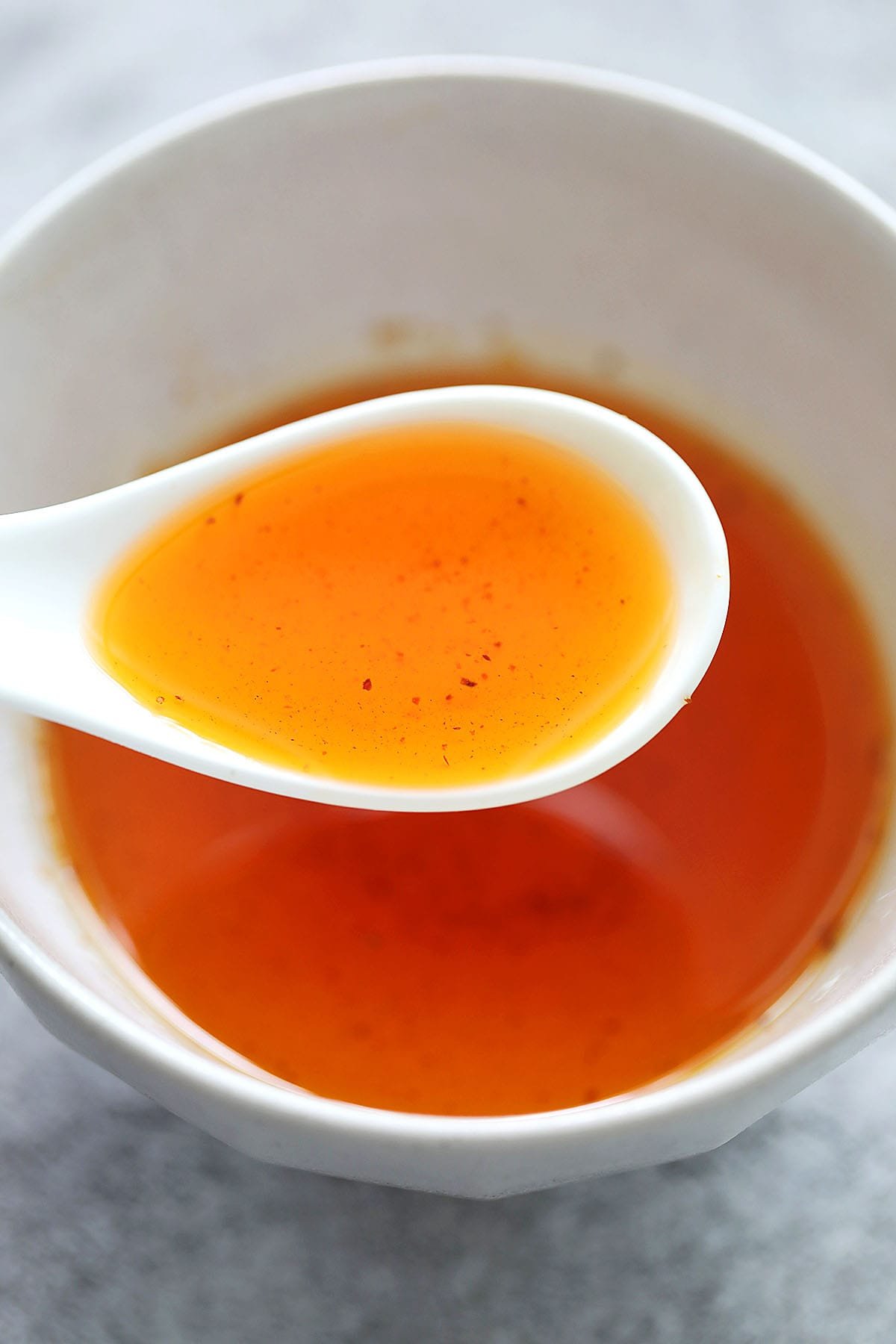
Once you try this homemade version, you’ll never go back to store-bought.
- Fragrant and flavorful. Freshly made chili oil has a bold aroma and deep red color that bottled versions just can’t match. Every spoonful adds instant heat and character.
- Cheaper and cleaner. Store-bought chili oils can be pricey or packed with preservatives. Making it at home costs less and tastes way better.
- Quick and simple. Just three ingredients and a few minutes of heating, no fancy tools, no mess, and it keeps for weeks.
- Versatile kitchen staple. Drizzle it over noodles, dumplings, eggs, or stir-fries for that extra kick. It goes with almost everything.
Ingredients You’ll Need
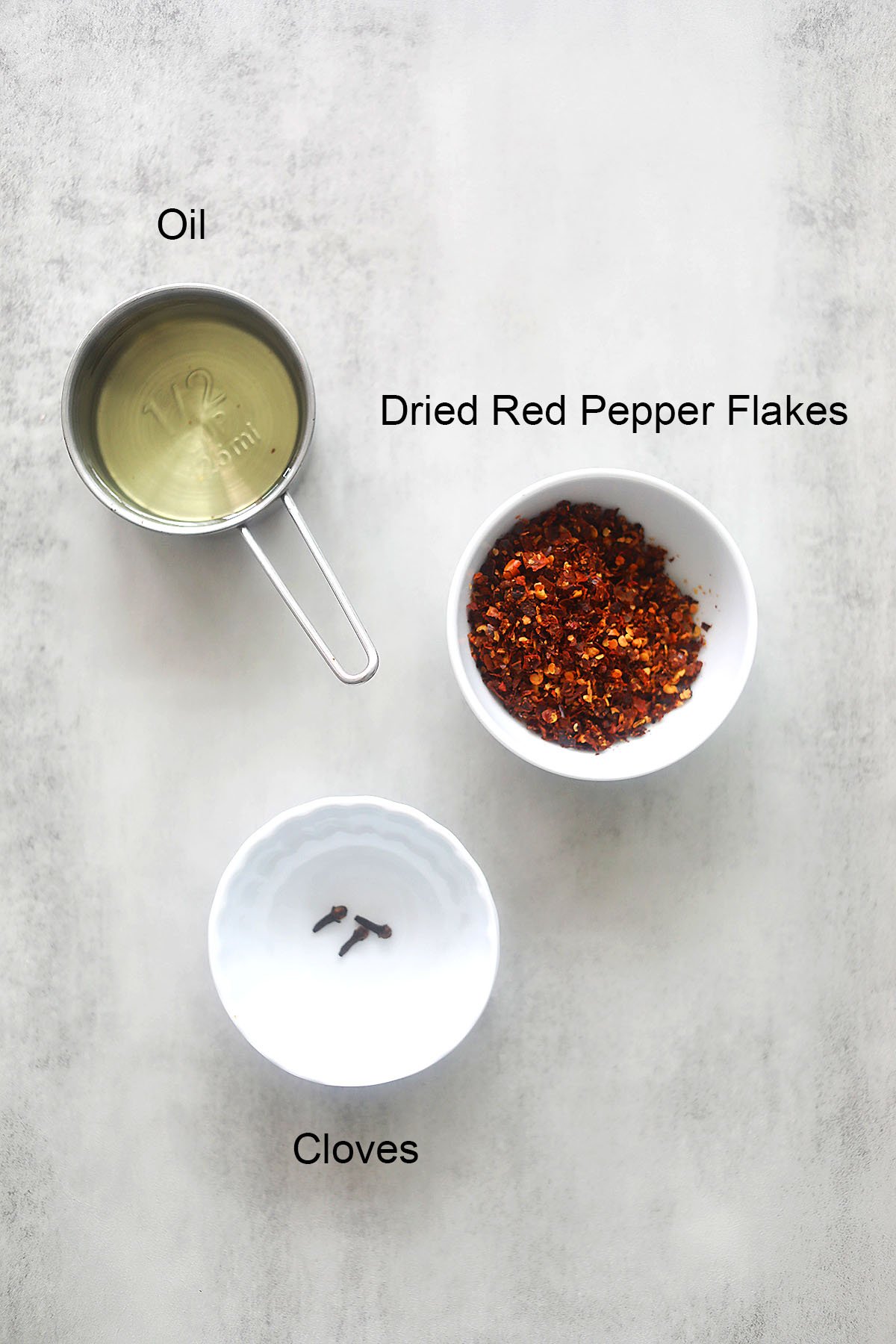
- Dried red pepper flakes
- Oil – Use vegetable oil or canola oil.
Check out the recipe card at the bottom of this post for all the ingredient details.
Pro Tip #1: Choosing The Right Chili Flakes
Use good-quality dried red pepper flakes for the best color and flavor. Choose ones with more chili flakes and fewer seeds. Make sure the chili flakes are bright red so you get that beautiful red color. You can also just use whatever chili flakes you have on hand, it’ll still taste great.
Pro Tip #2: Why I Add Cloves
Cloves might seem unexpected, but they add a subtle warmth and aroma that make the chili oil more complex and fragrant. You’ll taste that little hint of spice that sets homemade chili oil apart from store-bought ones.
Pro Tip #3: Customize With Warm Spices
I used 3 cloves, but you can also add 1 star anise or 1 cinnamon stick for a touch of warmth and aroma. If you like that signature ma (numbing) kick, toss in about 1 teaspoon of Sichuan peppercorns too.
Shopping Guide
- Dried Red Pepper Flakes: Look for Chinese-style chili flakes (sometimes labeled facing heaven chili/指天椒 or crushed chili peppers) at Asian grocery stores. They’re usually brighter red and slightly coarser than Italian-style flakes, which gives your oil that rich red color and balanced heat. If you can’t find them, use whatever chili flakes you have on hand.
- Sichuan Peppercorns: Sichuan peppercorns aren’t actually peppers; they’re the husks of a tiny citrus seed and are what create that signature numbing, tingling ma sensation. Look for whole red peppercorns with a strong aroma and avoid ones that look dull or have black seeds still inside, as those can taste bitter.
How To Make Chili Oil
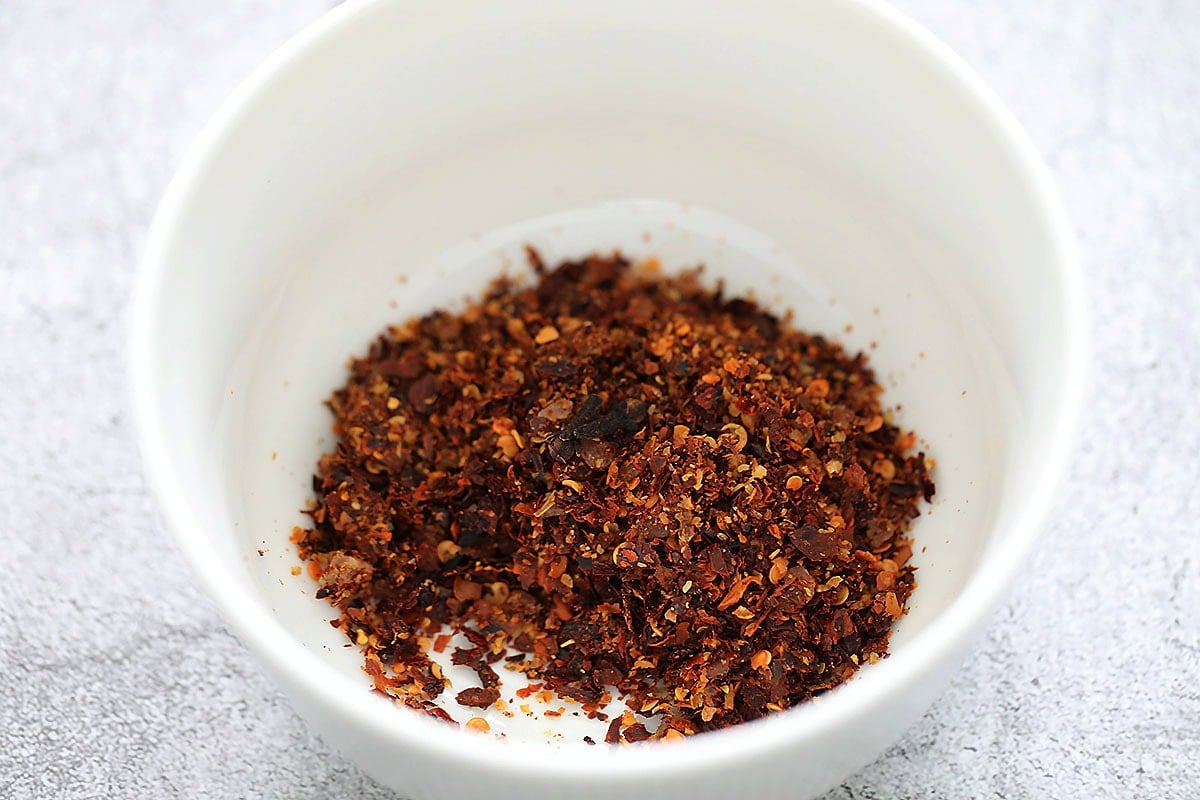
Start by grabbing a small heatproof bowl and adding in your dried red pepper flakes and cloves. This is where all that spicy, fragrant magic is going to happen once the hot oil hits.
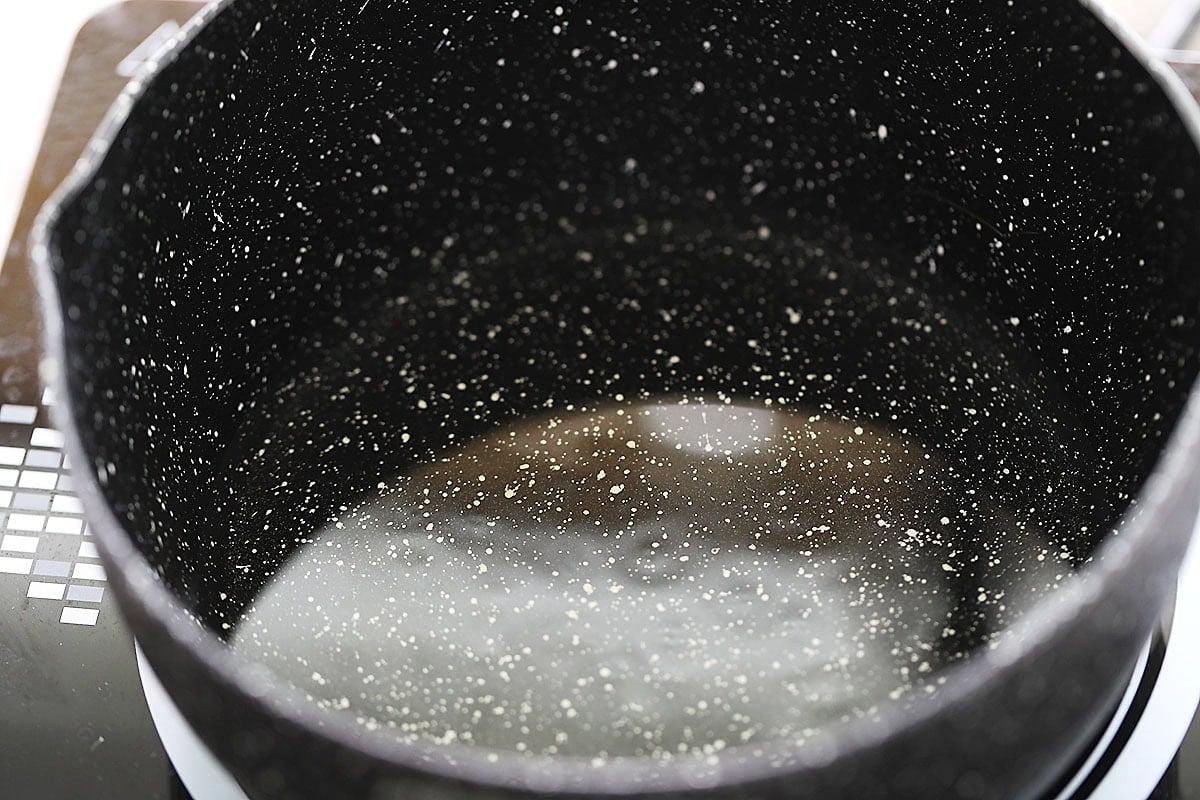
Heat the oil in a wok or small pan over high heat until it’s really hot. You’ll know it’s ready when you see a little swirl of white smoke rise up and tiny bubbles form around a pair of wooden chopsticks.
Pro Tip: Every oil has a different smoking point, so just watch for that light smoke, that’s your cue it’s time to pour.
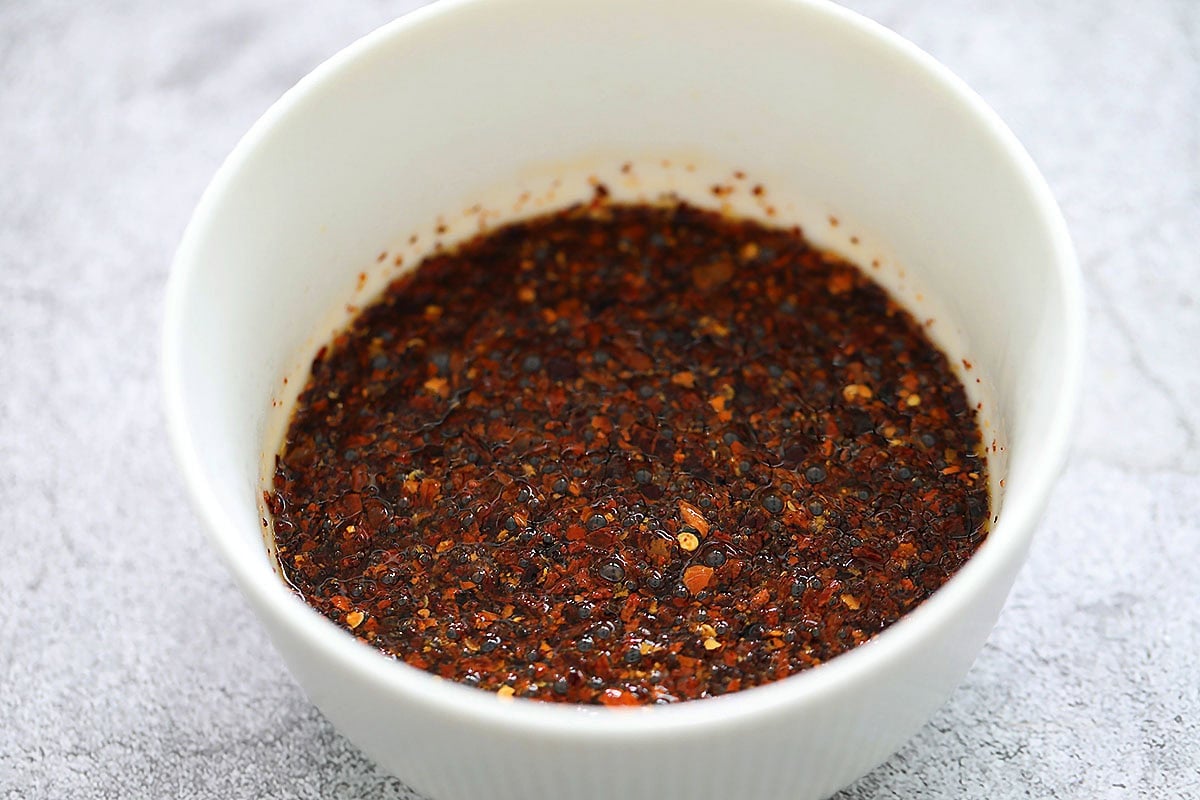
Carefully pour the hot oil over the red pepper flakes and cloves. You’ll hear that satisfying sizzle right away. Give it a quick stir with a pair of chopsticks to help the flakes release their color, heat, and aroma. Then just let it sit and cool for about 2 hours so the flavors can fully develop and blend together.
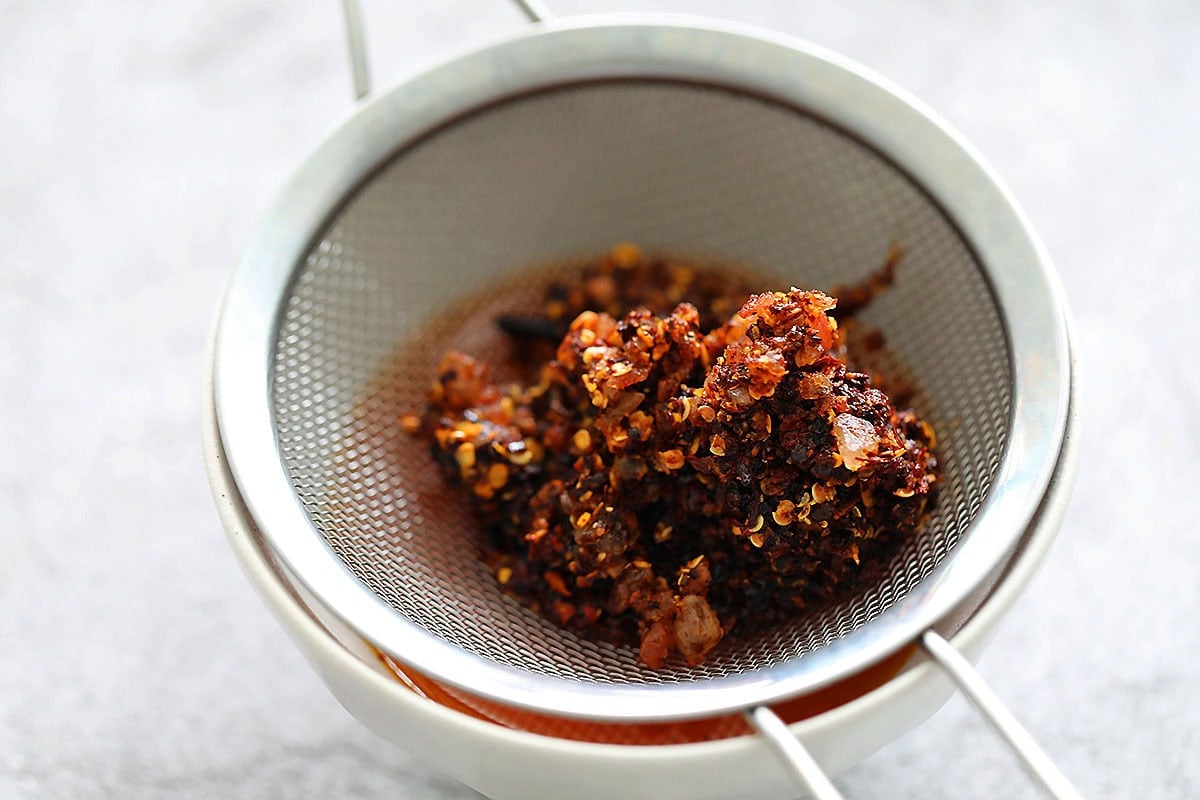
Once the chili oil has cooled, strain it through a fine mesh strainer to remove the pepper flakes and cloves. Toss out the bits, and that’s it. Your chili oil is ready to use.
Sidenote: I like to strain and toss out the bits so the oil stays clear and smooth. Leaving them in can make the oil turn bitter.
Storage Tip: Let the chili oil cool completely, then transfer it to a clean, dry jar or bottle. Store it in a cool, dark place or in the fridge, and it’ll keep for up to a month. Always use a clean spoon when scooping to keep it fresh and flavorful.
Simple Ways To Add It To Your Meals
- Drizzle over noodles or dumplings – Adds that perfect spicy finish that brings everything together. Try it with my Sichuan Red Oil Wontons or toss it over Sichuan (Szechuan) Cold Noodles.
- Mix into dipping sauces – Use it to make my Dumpling Dipping Sauce for a quick, flavor-packed dip. It’s especially good with Chinese Dumplings or Fried Wontons.
- Add a spoonful to stir-fries – Stir it in at the end to give your veggies, tofu, or meats a glossy, spicy kick.
- Top or fry eggs with it – Use a spoonful to make chili oil eggs or drizzle over fried eggs for that rich, spicy flavor that wakes everything up. Pairs perfectly with Fried Rice.
- Swirl into soups or hot pots – Adds depth, color, and that irresistible aroma. Try it in my Easy Chinese Hot Pot or even a bowl of Wonton Soup.
Frequently Asked Questions
Heating the oil until it reaches the smoking point helps draw out that deep, roasted flavor from the pepper flakes. It’s what gives the final result that toasty aroma and bright red color instead of tasting raw or flat.
It’s best not to. Once the oil has been poured over, most of their flavor and color have already been released. Toss them out and make a new batch when you’re ready for more.
That usually means it’s been refrigerated. Just let it come to room temperature or warm the jar slightly, and it’ll turn liquid again.
It stays fresh for about a month if stored in a clean, airtight jar. Keep it in a cool, dark place or refrigerate for longer shelf life. Just make sure to always use a clean spoon when scooping to avoid contamination.
This recipe makes 1/3 cup (80ml) and contains 1159 calories.
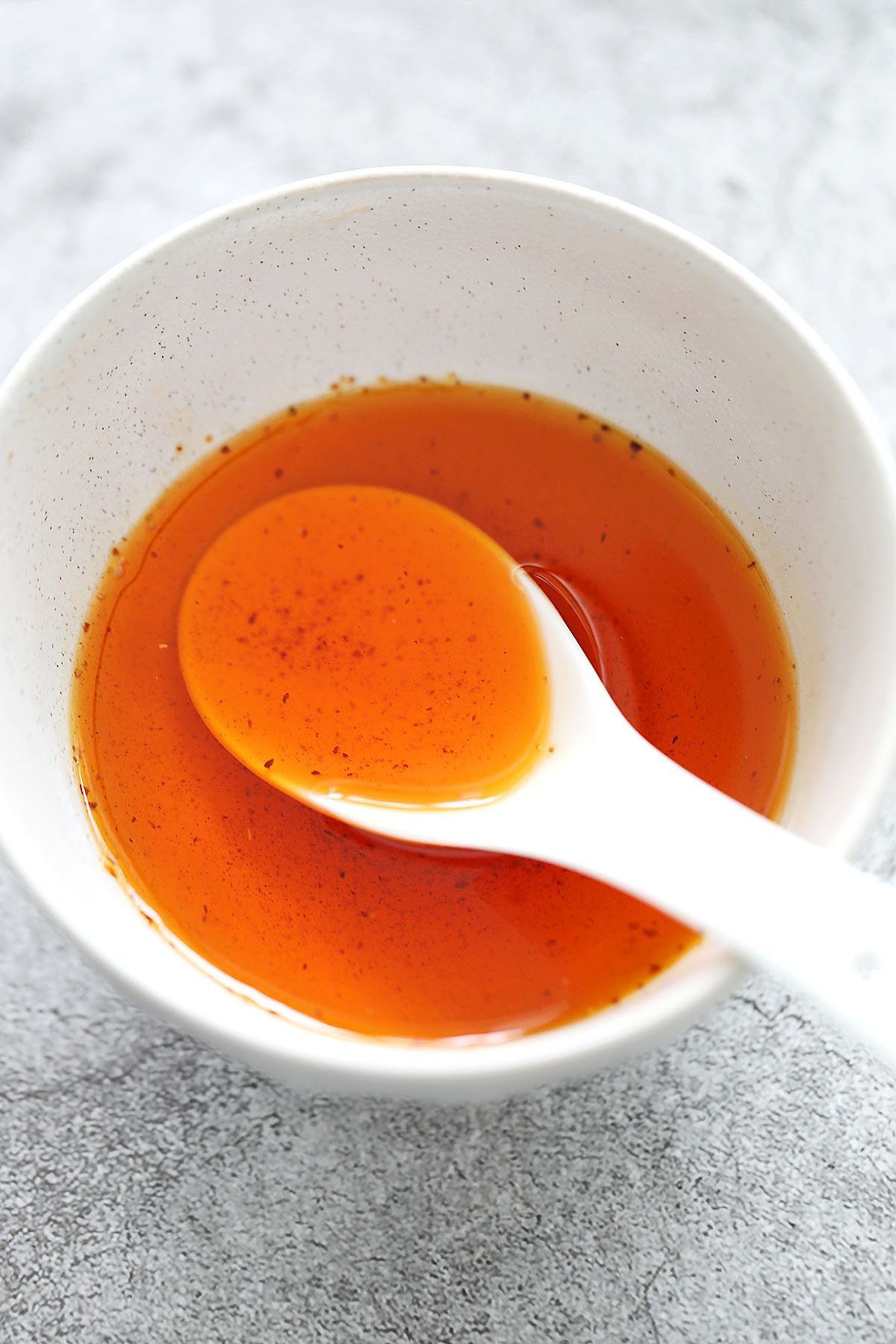
Other Homemade Recipes You Might Like
I hope you enjoy this post as much as I do. If you try my recipe, please leave a comment and consider giving it a 5-star rating. For more easy and delicious recipes, explore my Recipe Index, and stay updated by subscribing to my newsletter and following me on Facebook, Pinterest, and Instagram for new updates.
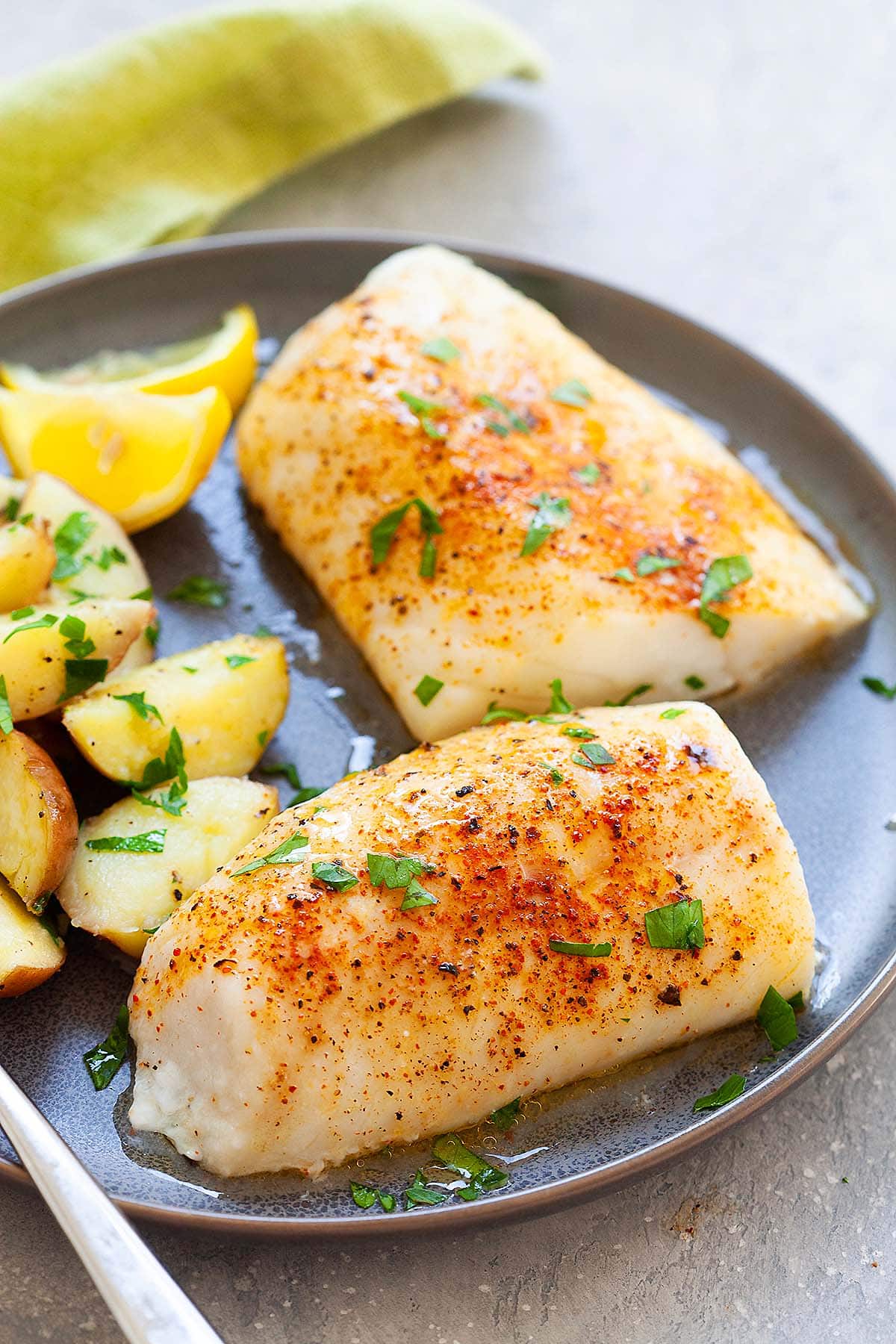
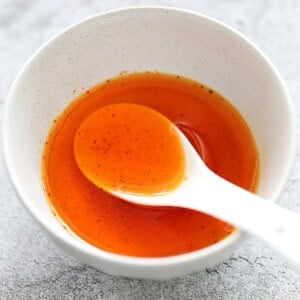
Chili Oil
Ingredients
- ¼ cup dried red pepper flakes
- 3 cloves, optional
- ½ cup oil
Instructions
- Place the dried red pepper flakes and cloves in a small bowl.
- Heat the oil in a wok or skillet over high heat until it reaches the smoking point. Different oils have different temperatures of smoking point. The oil is ready when you see a swirl of white smoke coming out from it and bubbles around a pair of wooden chopsticks.
- Pour the oil into the red pepper flakes and cloves. Stir the chili oil immediately with a pair of wooden chopsticks to help the red pepper flakes release their heat, aroma, and flavor. Let it cool for at least 2 hours, allowing the flavor to develop.
- Drain the chili oil with a fine strainer. Discard the strained pepper flakes. The oil is now ready for use.
Video
Notes
- This recipe makes about 1/3 cup (80 ml).
- You can customize the flavor to your liking. Add 3 cloves, 1 star anise, or 1 cinnamon stick for a deeper, spiced aroma.
- If you enjoy that classic numbing kick, toss in 1 teaspoon of Sichuan peppercorns for that ma (tingly) sensation.
- You’ll have some black bits in your homemade chili oil. To get a clearer oil, use a very fine strainer to strain it. You can also use a coffee filter or muslin cloth. Strain it twice for the best results.
- A sprinkle of sesame seeds on top for garnishing.
- Store your oil in a clean, airtight glass jar at room temperature.
Nutrition
Nutrition information is automatically calculated, so should only be used as an approximation.
